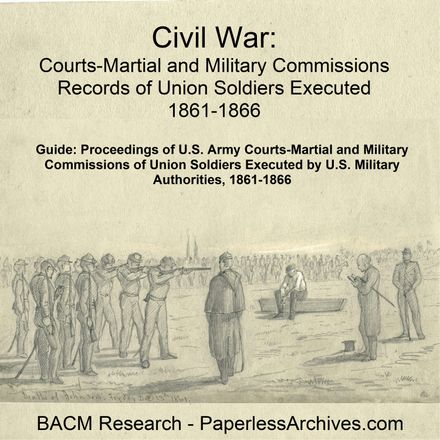$12.95
World War II United States Army 82nd Airborne Division Action & After-Action Reports - Download
World War II: United States Army 82nd Airborne Division Action & After-Action Reports
9,313 pages of after-action material including administration papers, administration orders, journals and messages, terrain studies and, records of combat, periodic reports, narrative histories, German POW interrogation reports, operation memoranda and maps.
The 82nd Division was reactivated on February 13, 1942, two months after the Japanese attack on Pearl Harbor and the German declaration of war. Under the command of Major General Omar Bradley, the division brought together three officers who would ultimately steer the U.S. Army during the following two decades: Matthew Ridgway, James M. Gavin, and Maxwell D. Taylor.
On 15 August 1942, the 82nd Infantry Division, commanded by Major General Ridgway, became the first airborne division in the history of the U.S. Army, and was later designated as the 82nd Airborne Division. The division initially consisted of the 325th, 326th and 327th Infantry Regiments, and supporting units. The 327th was soon transferred to help form the 101st Airborne Division and was replaced by the 504th Parachute Infantry Regiment, leaving the division with two regiments of glider infantry and one of parachute infantry.
Sicily and Italy
In April 1943 82nd paratroopers deployed to the Mediterranean Theater of Operations, under the command of Major General Ridgway to take part in the campaign to invade Sicily. The division's first two combat operations were parachute assaults into Sicily on 9 July and Salerno on 13 September 1943.
Normandy
The 82nd Airborne as part of Operation Neptune, conducted Mission Boston. On 5 and 6 June, the 82nd Airborne landed paratroopers, parachute artillery elements, and the 319th and 320th. During the 6 June assault, a 508th platoon leader, First Lieutenant Robert P. Mathias, would be the first U.S. Army officer killed by German fire on D-Day. On 7 June, after this first wave of attack, the 325th GIR would arrive by glider to provide a division reserve.
Market Garden
On August 2, 1944 the division became part of the First Allied Airborne Army. In September, the 82nd began planning for Operation Market Garden in the Netherlands. The operation called for the seizure of key bridges and roads deep behind German lines.
The Battle of the Bulge
On 16 December 1944, the Germans launched a surprise offensive through the Ardennes Forest, which became known as the Battle of the Bulge.
On 20 December 1944, the 82nd Airborne Division was assigned to take Cheneux where they would force the Waffen SS Division Leibstandarte's Kampfgruppe Peiper into a fighting retreat. On 21–22 December 1944, the 82nd Airborne faced counterattacks from three powerful Waffen SS divisions which included the 1st SS Panzer Division Leibstandarte SS Adolf Hitler, 2nd SS Panzer Division Das Reich, and the 9th SS Panzer Division Hohenstaufen. The Waffen SS efforts to relieve Kampfgruppe Peiper failed due to the 82nd Airborne.
On 24 December 1944, the 82nd Airborne Division with an official strength of 8,520 men was facing off against a vastly larger combined force of 43,000 men and over 1,200 armored fighting and artillery vehicles and pieces. Due to these circumstances the 82nd Airborne Division was forced to withdrawal for the first time in its combat history. On 3 January 1945, the 82nd Airborne Division conducted a counterattack. On the first day's fighting the Division overran the 62nd Volksgrenadiers and the 9th SS Panzer's positions capturing 2,400 prisoners. The 82nd Airborne suffered high casualties in the process.
The attached 551st Parachute Infantry Battalion was all but destroyed during these attacks. Of the 826 men that went into the Ardennes, only 110 came out. Having lost its charismatic leader Lt. Colonel Joerg, and almost all its men either wounded, killed, or frostbitten, the 551 was never reconstituted. The few soldiers that remained were later absorbed into units of the 82nd Airborne.
Occupation of Germany
Following Germany's surrender, the 82nd Airborne Division entered Berlin for occupation duty, lasting from April until December 1945.
Document collection sets highlights include:
82nd Airborne Division history, 25 August 1917-1 March 1944. Biography of some officers, history prior to present war through Italian Campaign
Narrative report, 25 May-15 July 1944, Normandy; unit journal, G-2 estimate of situation, terrain study and overlays.
82nd Airborne Division in Sicily and Italy, July 1943-January 1944, Sicily, 505th Parachute Infantry CT Reports; 504th History “Devils in Baggy Pants” Sicily history; Italy, Division after action report.
September-November 1943; 82nd Airborne Division in Sicily and Italy, July 1943-January 1944 - 325th Glider Infantry report; 505th Parachute Infantry Report, 6 casualties in Italy, World War II casualties, decorations, citations, summary of days in action assignments attachments, detachments and CP location.
Stories of Sicilian invasion by Jack Thompson, War Correspondent, July-August 1943.
Lessons learned in Operation in Sicily, supply and evacuation only, 3 August 1943.
Field Order #6, Operation Neptune, 28 May 1944 with overlays.
Graphic story of the 82nd Airborne Division operations on Cherbourg Peninsula, 5 June-8 July 1944.
Operation Neptune action in Normandy, France, report by regiments, troop list, casualties and overlays.
Operations report, Neptune Operation, 6 June to 8 July 1944. Statistical study of glider landings, list of aircraft, personnel and major equipment of Forces A, B, C, and list of units attached to the 82nd Airborne; casualties by branch; memos, resupply and data on Operation Neptune with overlays.
Field Order Number 11 – Operation Bigot Market and Market - September 1944 - This intelligence report of the 82nd Airborne Division in Operation Market. Includes annexes such as notes on the Nijmegen Area, Tactical Study of the Terrain, Bridge Data, Order of Battle Summary, Evaluation of Terrain for Airborne Landings in the Nijmegen Area, and Security prior to the operation. Graphics included.
Field Order #11, Operation Market, 13 September 1944, with overlays and maps.
Graphic history Operation Market, Holland, 17-30 September 1944, overlays, maps, showing parachute landings, statistical study of glider landings, statistical study of parachute landings.
G-2 journal and message file, Operation Market, 16-19 October 1944.
G-2 journal and message file, Operation Market, 20-23 October 1944.
G-2 journal and message field, Operation Market, 24-27 October 1944
Office of Provost Marshall, Chronological log of Bulge mission, 17 December 1944- 22 February 1945.
Battle of the Belgian Bulge in Siegfried Line and the Roer River, 17 December 1944-February 1945, Division Commander’s report, chronology, December 1944, January 1945, February 1945 and overlays.
After action report, Central Europe, April 1945. Narrative, intelligence phases, schedule of attachments, map routes of march to Cologne area, Cologne to Elbe River, Rhine River defenses, Elbe River crossing and bridgehead establishment; Part B: After action report, Central Europe, May 1945. Officer list, sub-attachments, record of unconditional surrender of German 21st Army to the 82nd Airborne and maps.











